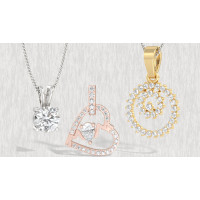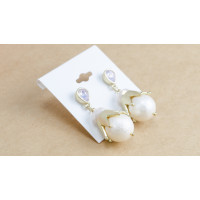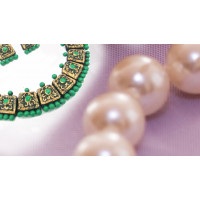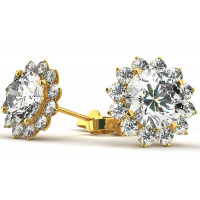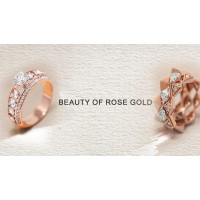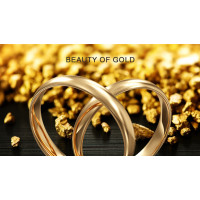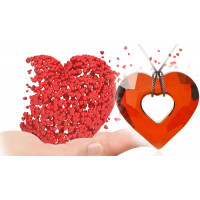making a style statement with oxidised jewellery : a brief overview
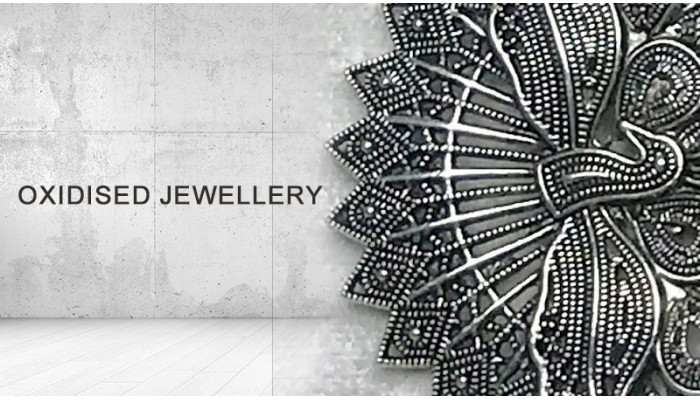
Nothing can be more versatile and eye-appealing than good old oxidised jewellery. It
is truly fresh and fuss free-range, which makes it a huge hit among women of all
ages. With a myriad of brilliant designs to choose from, you can never go wrong with
oxidised jewellery as your fashion accessory. Read on, to know what oxidised jewellery is and the reason behind its raging popularity.
Oxidised jewellery: A backdrop
Oxidised jewellery is basically blackened sterling silver metal. It is usually achieved by exposing the metal to an intricate chemical process. The tarnished or oxidised layer on the jewellery is technically termed as “patina”. This thin layer of patina forms on the surface of the metal, when it is chemically treated with sulphides. Its worthy to mention here, a controlled application of this process will give us beautiful hues like blues and purples, instead of blackish surface colour.
The technique of blackening silver metal was first introduced in 1100 AD and primarily found its application in filtering out impurities from a metal. In ancient times, specifically in the Vedic civilisation, metals were originally used for utilitarian purposes. As it always happens, a creative brainwave let to the introduction of metal ornaments like, necklace pieces, earrings, rings and bracelets. This unique fashion trend has taken its inspiration from the indigenous tribal belts of India. The vibrant tribal culture of our country has given way to a number of exquisite jewellery pieces, that over time developed into something as beautiful and rustic as oxidised jewellery pieces.
Making of oxidised pieces
Traditionally, there are two methods to create oxidised jewellery. The most common one is, to expose the silver metal to sulphides, in order to that blackened layer. The second method uses hydrochloric acid as the agent of oxidation. Although, the second approach is a much quicker and an effective one, it is a rather hazardous process, and should be in accordance with proper safety guidelines.
Why should you consider adding them to your collection?
1. Oxidised jewellery is absolutely pocket friendly. You can find lovely oxidised jhumkas or bracelets at incredible price points. Price ranges anywhere between Rs 50 to Rs 450. If you are looking for something a little premier, the prices are going to spike a little; still, they fall within the affordable bracket.
2. Versatility is definitely a big reason for their staggering popularity. Be it a regular office day or a dinner invitation, these beauties are there to make you look glamorous at any time of the day. Team it up with your casual or traditional wear, and create a fun and trendy statement look.
3. You get to choose from a wide array of innovative and colourful designs. You can find earrings, necklaces, bracelets, anklets to name a few, in all kinds of vibrant and ethnic motifs. These pieces can brighten up your look for the day, in an instant.
4. It’s easier to maintain and clean oxidised jewellery, than any of your regular gold jewellery.
Styling oxidised jewellery
Tribal or Mughal motifs look great when paired with traditional attires. Team up your saree with a pair of oxidised jhumkas in Kundan design, or jazz up your outfit, by accessorising with a stack of exquisite meenakari bangles. Oxidised pendants that have a glass or pearl embellishments, look equally regal when paired with any ethnic outfit. These pieces are great to liven up your casual wear. The key is to go for simple yet vibrant pieces. All in all, it’s really easy to style and express your creativity through these fresh and fabulous pieces.
Maintenance
There are certain things that you should keep in mind, if you have oxidised pieces in your jewel ensemble.
1. Storage of oxidised jewellery is an important factor, that contributes to longer shelf life. When not in use, keep the jewellery in closed containers, preferably wrapped in cotton clothes or rolls.
2. Exposure to sunlight and any source of fluorescent light, should be avoided.
3. Use any suitable polishing cloth, and periodically clean or polish the surface of the jewellery.
4. Any tarnish remover (like a paste), should not be used to polish oxidised jewellery.
5. Last but not the least, do not let these pieces come in contact with steam or hot water.
If you want to add a rustic appeal to your look, then consider investing in oxidised jewellery and have fun experimenting with your looks!
For an exciting range of fashion jewellery, do visit our website miorola.com.
Related Posts
Diamond Pendants In Cultured Diamonds
Diamond pendants are a much-coveted item for every jewellery lover. However small or big, these pieces can never go out of style. From an office meeting to a night out, a diamond pendant can add the right amount of bling and make you look fabulous at any event and time of the day. Nonetheless, it is not the first choice for many people, as they might cost a bomb. That is where comes the option of buying cultured diamonds. So, what exactly are cultured diamonds? The first thing that you should..
Earring Styles That Work Best With a Saree
If there is something which can instantly transform you into a glamorous diva, it has to be the ever elegant and timeless saree. Dressing up in a saree can be an exciting prospect, as there is plenty of room for you to get creative with your outfit. While a saree itself needs no introduction, it always turns out to be even more spectacular when you spice it up with the right choice of accessories. Apart from a gorgeous necklace or a choker set, earrings complement a saree quite well and wor..
Terracotta Jewellery Is In : Here Is What You Need To Know
The chic, glamorous world of today has quite freely, opened its doors to a humbler and more unassuming genre, of terracotta jewellery. From illustrious galleries to local jewellers, terracotta jewellery has managed to create a ripple in the fashion community, with its charming and tasteful aesthetic. This style has picked up its pace in recent years and emerged as one of the coolest trends in town. Read on to discover more about this newest model of the fashion world. What is a terracotta jewel..
The Most Popular Earrings That Every Jewel Lover Should Own
Earrings are always the defining point of every look that you put together. Be it your ethnic best or a breezy frock, an earring pair will definitely help you add some bling and elevate your whole look book. Your earring ensemble should be versatile and inclusive of the various indigenous designs, from every part of the world. Read on to know about some of the most popular earring styles that should be a part of your wardrobe. CharmingChandeliers Perhaps the most stunning out of all, chandelie..
Rose Gold Jewellery: A BRIEF OVERVIEW
A perfect complement to traditional gold rose gold jewellery has created a ripple in the fashion community, with its pristine-pink aesthetic. With the advent of spring, some prefer to switch to rose-gold accessories, as it stands out beautifully against the fresh summery glow of nature. Rose gold is really easy to accessorise and makes you look stunning at any time of the day. The Science Behind Rose-Gold Gold in its pure state (24 karat gold), is extremely soft and unsuitable, for jewelle..
India's Take On Gold Mining: A SYNOPSIS
With 800-900 tonnes of annual overseas purchases, India has been termed the largest importer of gold. The excessive demand in the domestic jewellery industry, is the impetus for such generous percentages. In addition to its ornamental significance, with the advent of lucrative investment options like gold ETFs (Exchange-traded funds), gold mutual funds, sovereign gold bonds, to name a few, many investors are opting to invest more in gold, to boost their portfolio. The domestic demand for g..
Top 7 Jewellery Gifts For This Valentine's Day
If are looking for the perfect something to surprise your loved one on this Valentine’s Day, then consider jewellery. The great thing about jewellery is that, they are treasured by everyone. When it comes to romantic gifts, jewellery can be a fantastic way to communicate that unending love you feel for your significant other. Be it a diamond ring for her, or a wedding band for him, jewellery always makes a fabulous gift. Here are 7 jewellery pieces, that will make a perfect gift on this da..
